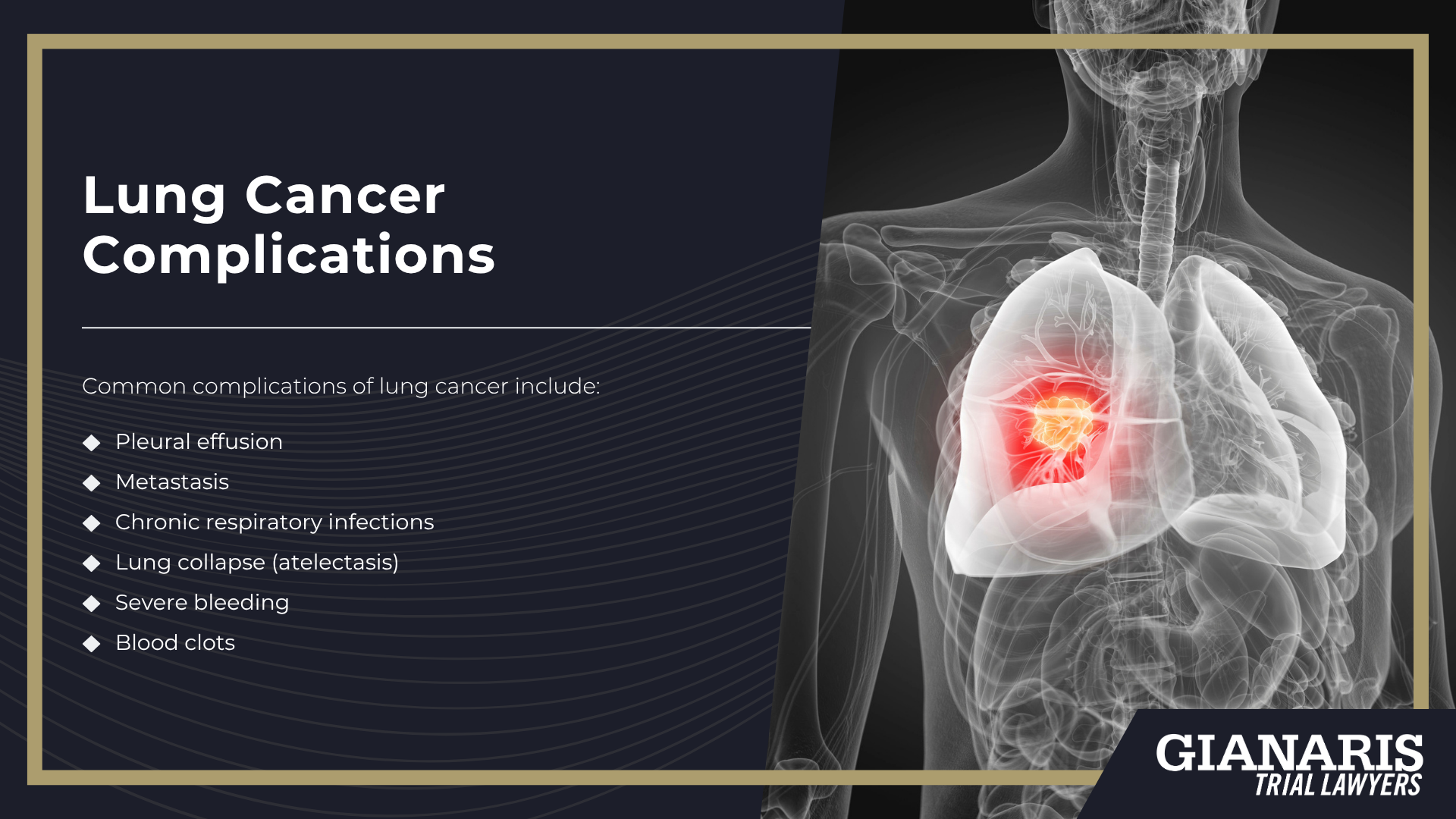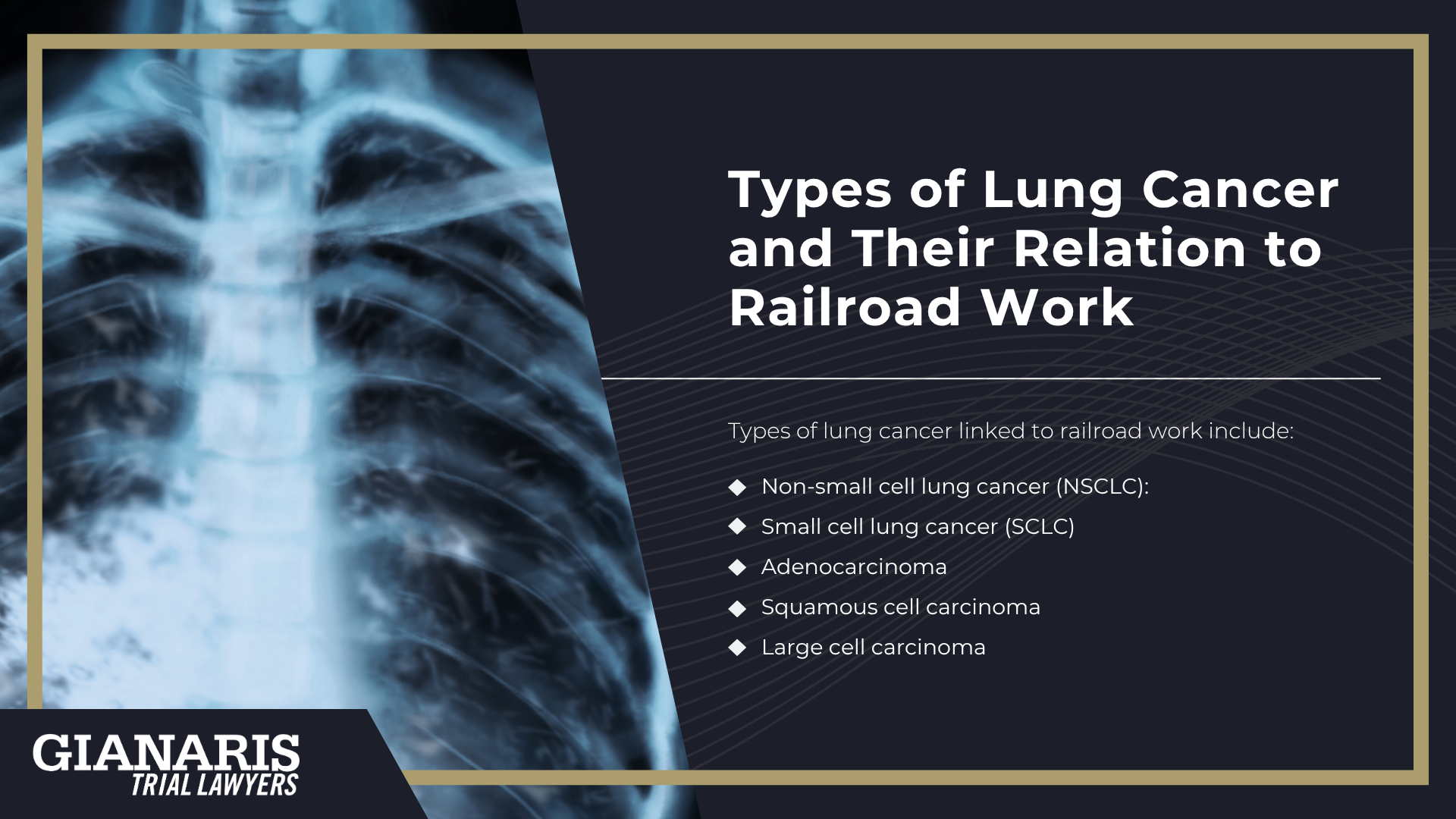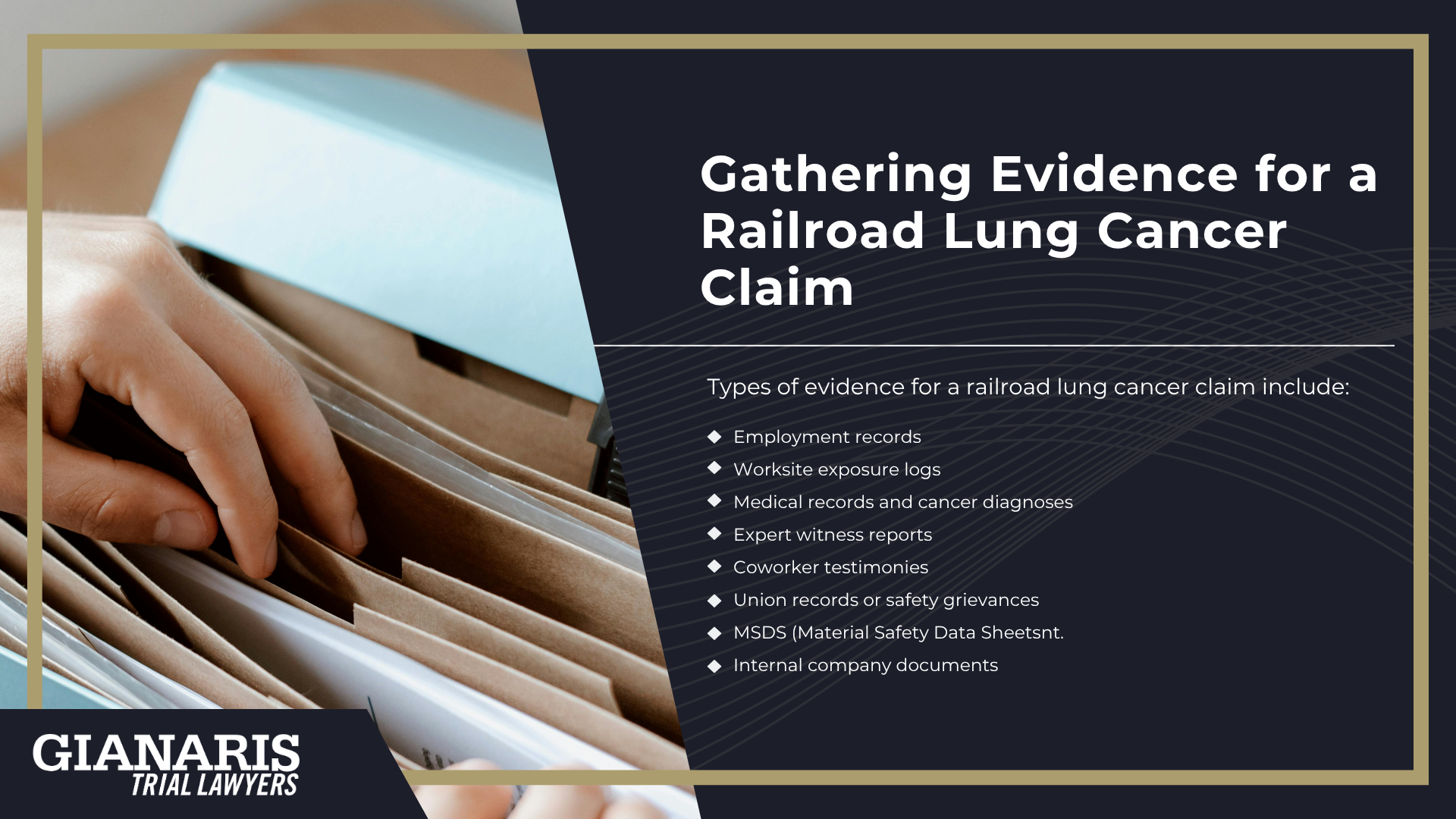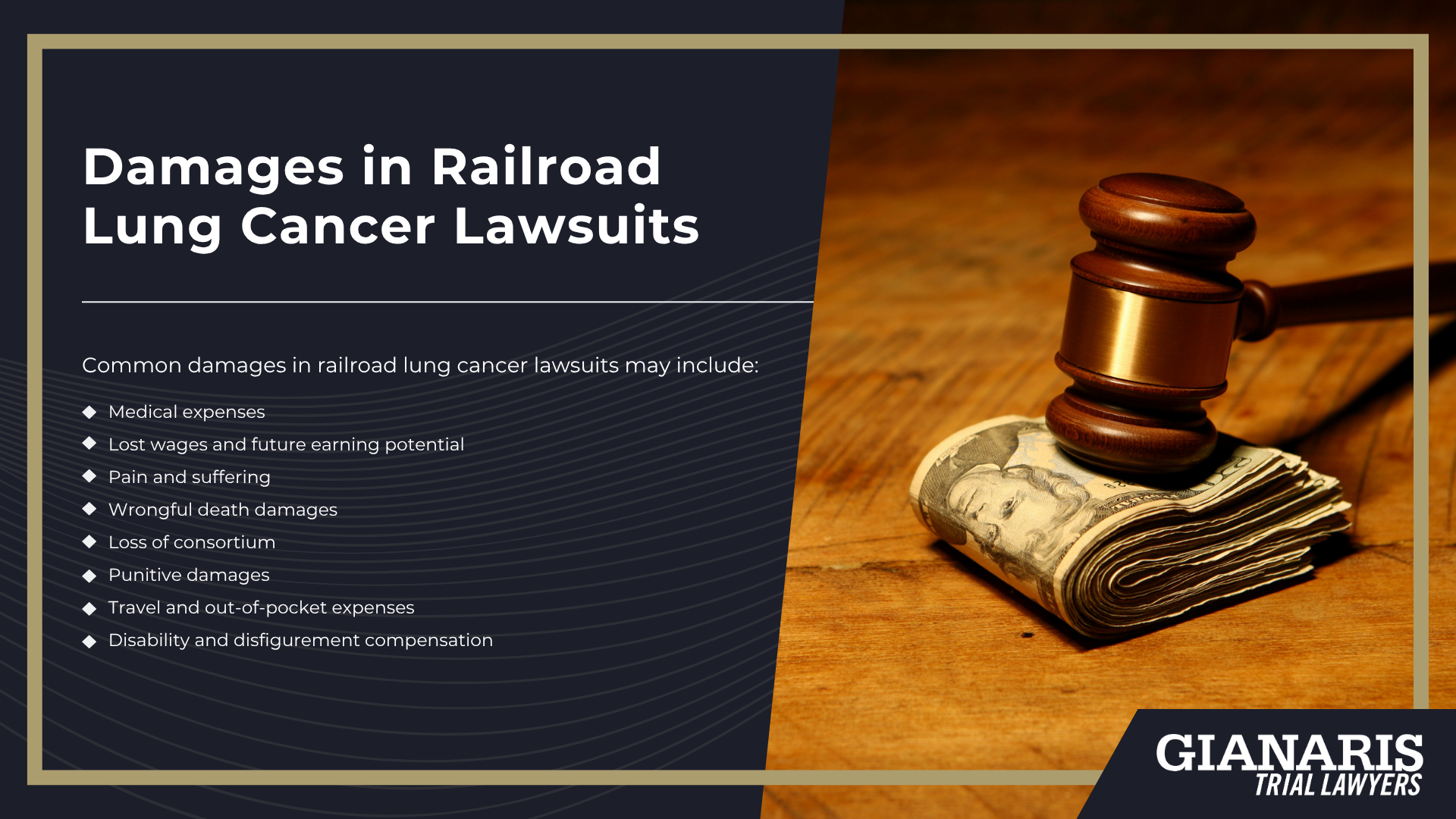Lung cancer among railroad workers is linked to both long-term exposure and repeated short-term exposure to a host of dangerous chemicals commonly found in railroad operations.
Scientific research (including studies by NIOSH and EPA-based risk assessments) establishes that occupational diesel exhaust exposure significantly increases lung cancer risk, confirming a direct association in railroad environments where exposure levels often exceed ambient norms.
Many railroad workers also inhale welding fumes, silica dust, asbestos fibers, and emissions from benzene-containing products or crude oil derivatives used in lubricants and cleaning agents; each of which has independently been linked to lung and other respiratory cancers.
These workplace exposures, often unprotected, compromise lung function, elevate the chance of developing cancer, and cause chronic conditions like chronic obstructive pulmonary disease (COPD), especially when protective measures were not consistently enforced.
Even former railroad workers who no longer work in the industry face elevated risk because cancer may appear decades after exposure occurred.
The cumulative impact of diesel fumes, asbestos dust, silica particles, and benzene vapor in confined or poorly ventilated areas contributes heavily to this risk.
These exposures are central to many railroad industry cancer claims, where plaintiffs must show that their employment conditions created unsafe exposure, often without adequate warning or protection from the railroad company.
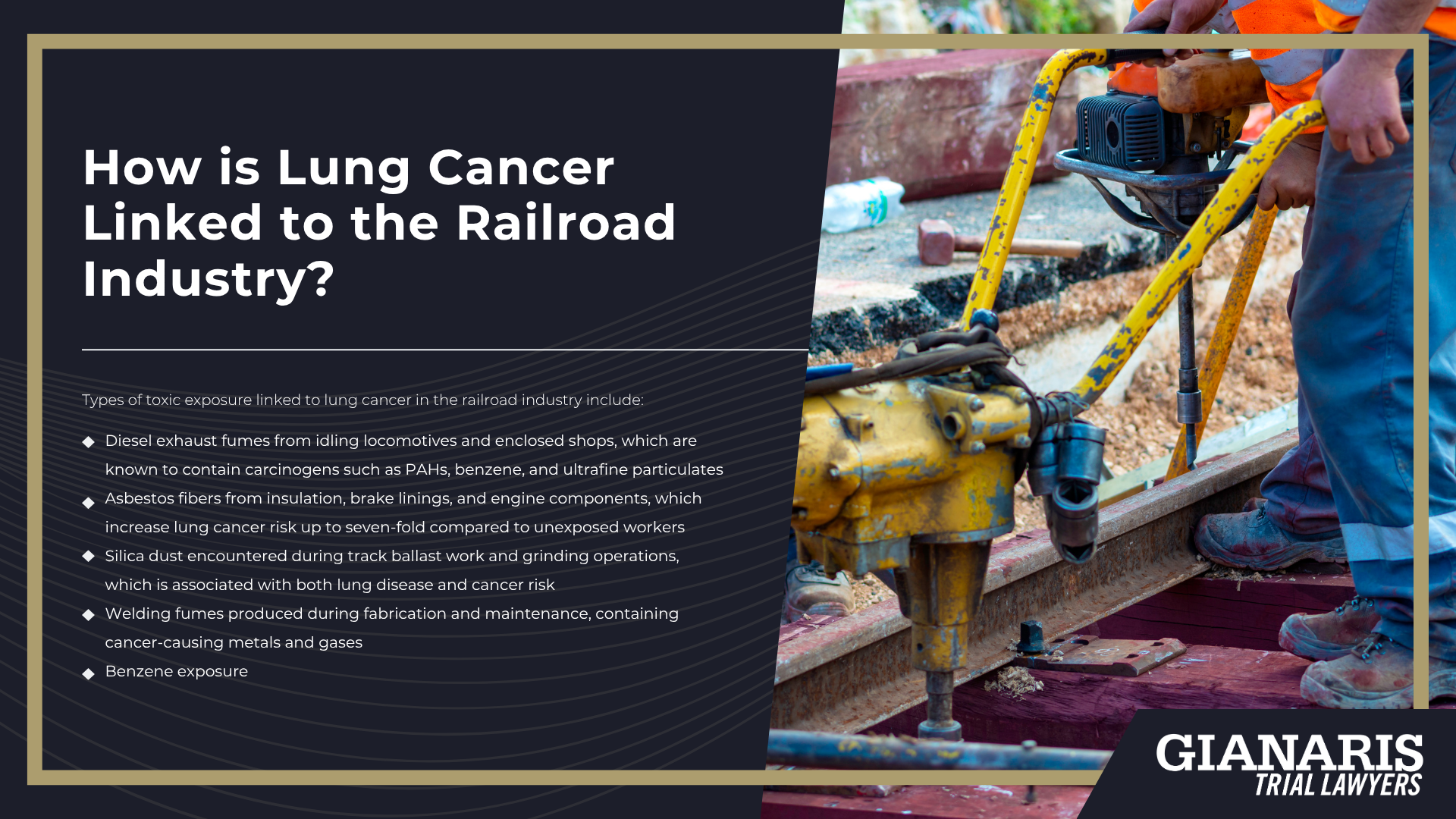
Types of toxic exposure linked to lung cancer in the railroad industry include:
- Diesel exhaust fumes from idling locomotives and enclosed shops, which are known to contain carcinogens such as PAHs, benzene, and ultrafine particulates
- Asbestos fibers from insulation, brake linings, and engine components, which increase lung cancer risk up to seven-fold compared to unexposed workers
- Silica dust encountered during track ballast work and grinding operations, which is associated with both lung disease and cancer risk
- Welding fumes produced during fabrication and maintenance, containing cancer-causing metals and gases
- Benzene exposure from fuel handling, solvents, and creosote treatments on railroad ties, which contributes to lung cancer and other blood cancers
These routes of exposure reflect the everyday hazards faced by many railroad workers.
Establishing a clear connection between workplace conditions and a cancer diagnosis is essential for pursuing legal claims under FELA.
Railroad Jobs Linked to an Increased Risk of Lung Cancer
Certain job roles in the railroad industry have historically faced higher risks of developing lung cancer due to frequent exposure to diesel exhaust, asbestos-containing materials, and other hazardous substances.
These exposures often occurred in enclosed or poorly ventilated environments and over long periods, compounding the health risks for affected workers.
Jobs involving maintenance, mechanical work, and direct contact with diesel-powered engines or asbestos insulation were especially dangerous.
The materials and methods used during decades of railroad operations left many workers vulnerable, even with short-term exposure in some cases.
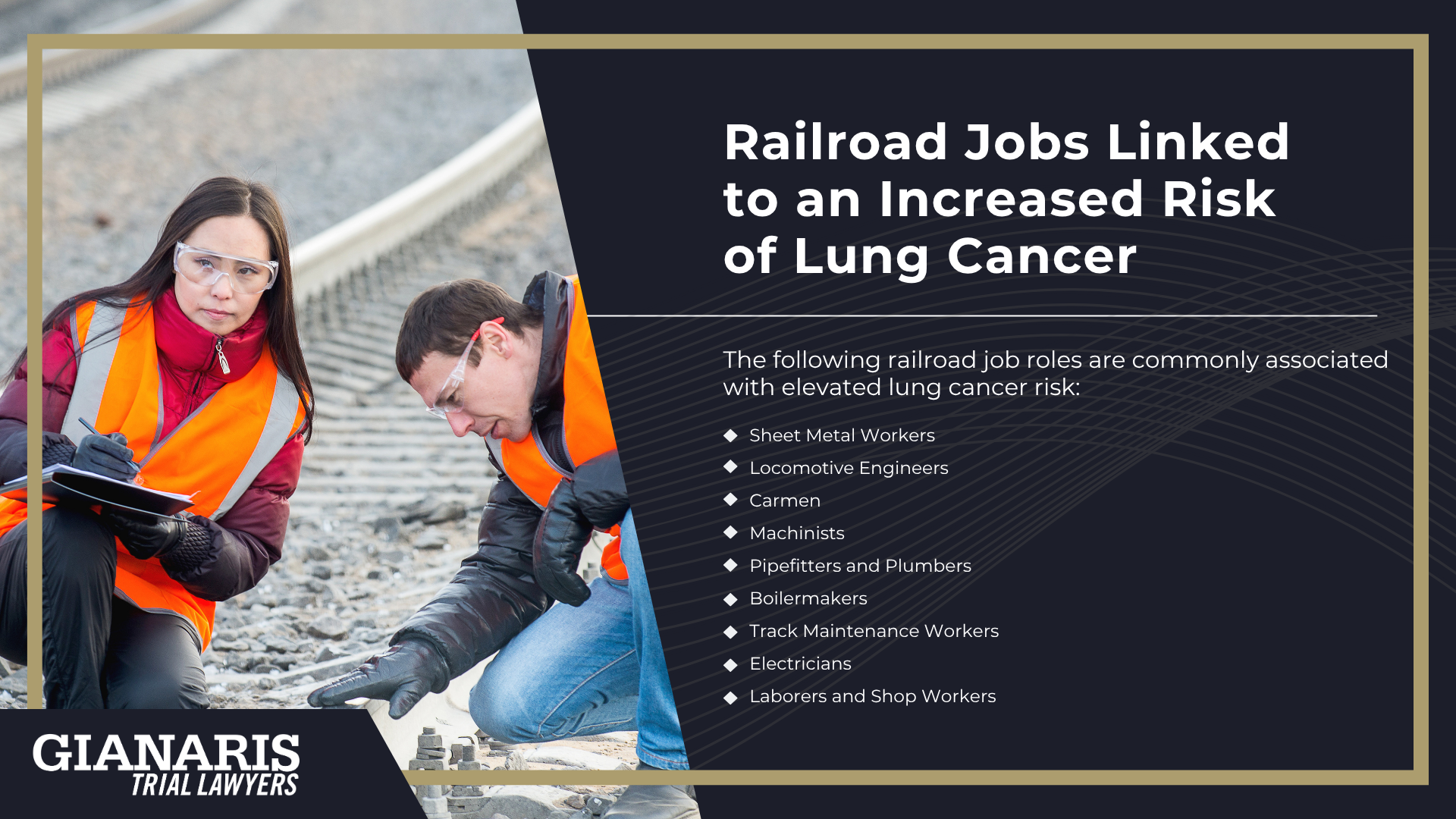
The following railroad job roles are commonly associated with elevated lung cancer risk:
- Sheet Metal Workers – Frequently exposed to asbestos insulation and welding fumes while working on train cars and maintenance tasks.
- Locomotive Engineers – Spent long hours in diesel-powered engines with high levels of diesel exhaust exposure.
- Carmen – Often worked on brake systems and train car interiors that historically contained asbestos.
- Machinists – Handled and maintained engines and components coated in or surrounded by asbestos-containing materials and diesel fuel.
- Pipefitters and Plumbers – Installed or repaired steam lines and valves wrapped in asbestos insulation.
- Boilermakers – Frequently worked in enclosed areas with poor ventilation while exposed to welding fumes and asbestos.
- Track Maintenance Workers – Came into contact with creosote-treated railroad ties and diesel equipment.
- Electricians – Encountered dust and fibers from disturbed asbestos-containing insulation during upgrades or repairs.
- Laborers and Shop Workers – Frequently exposed to crude oil, diesel fumes, and other dangerous chemicals used in daily operations.
Each of these roles placed workers in regular contact with substances now known to cause serious respiratory diseases and cancers.
Gianaris Trial Lawyers investigates the work history and exposure conditions of affected workers to help them pursue justice through FELA and related legal actions.



